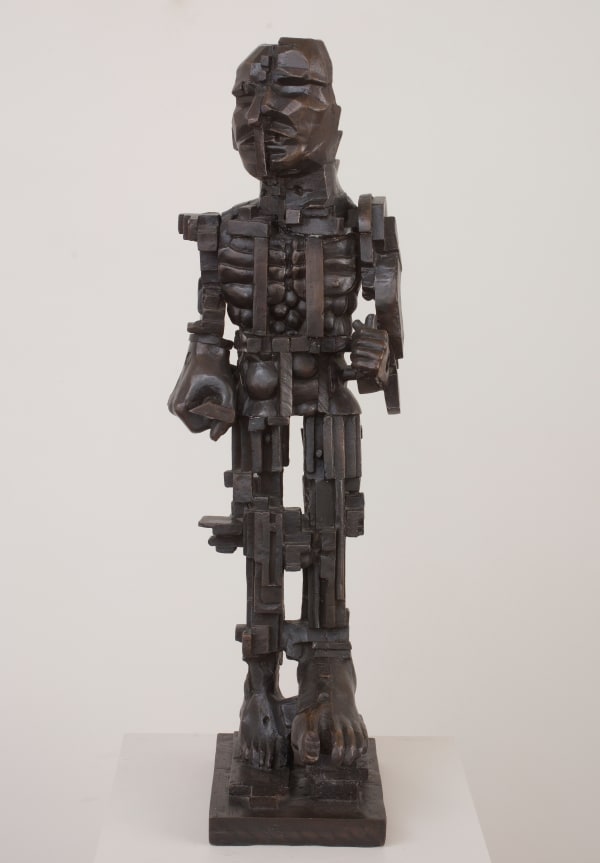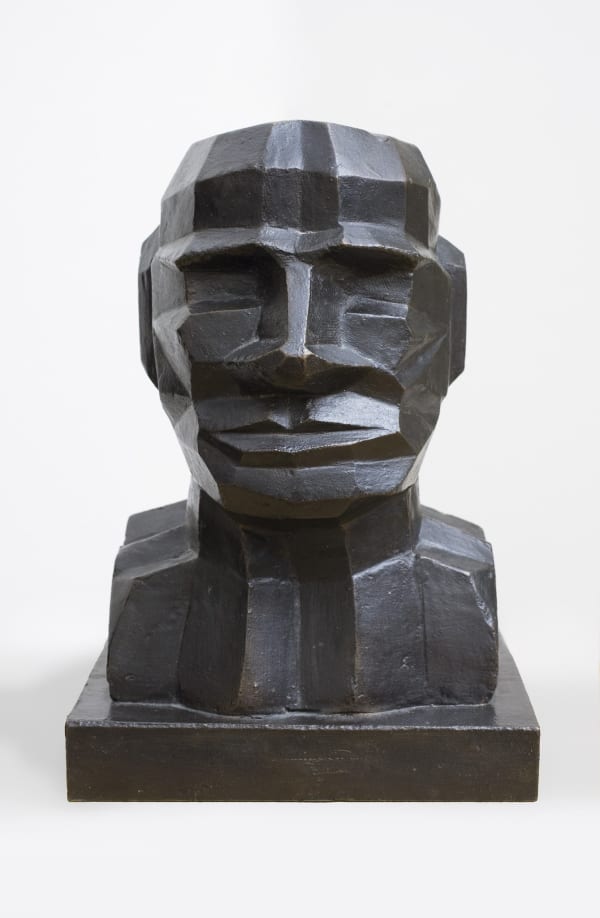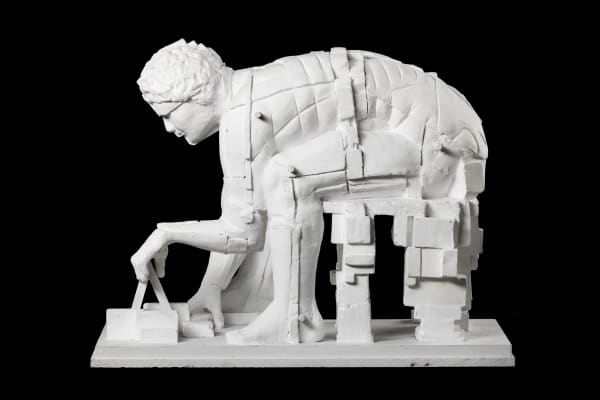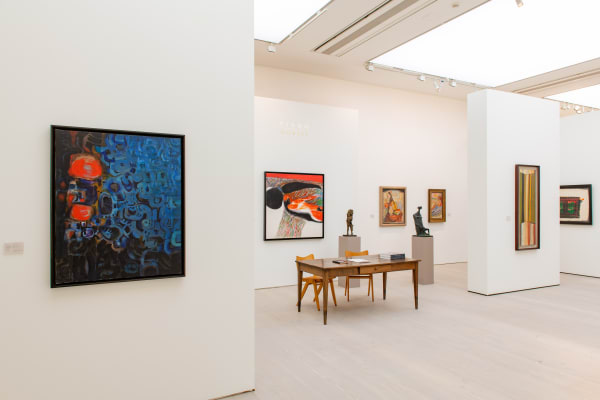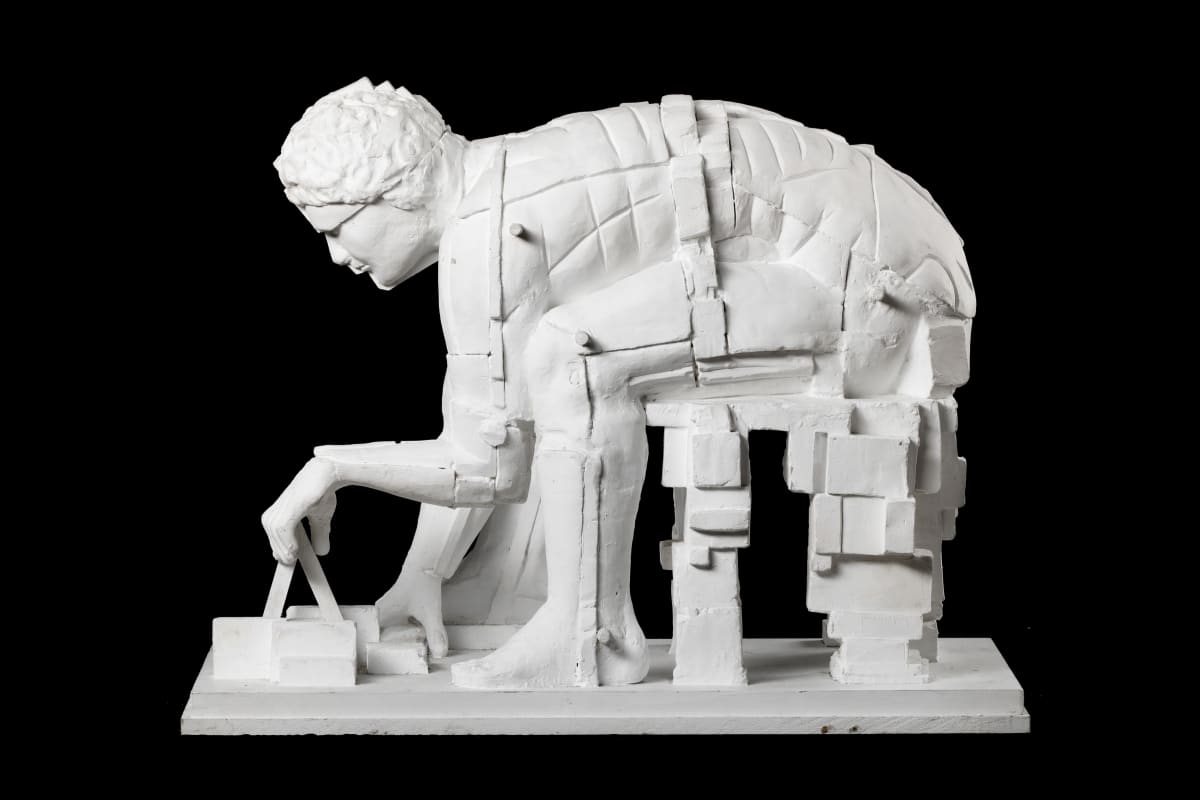Sir Eduardo Paolozzi
The gallery regularly handles, acquires and advises on works by Sir Eduardo Paolozzi. For more information or the availability of work, please contact the gallery.
Sir Eduardo Paolozzi (1924 - 2005)
Eduardo Paolozzi attended Edinburgh College of Art, St Martin's School of Art in London, and then studied sculpture at the Slade School of Fine Art. From 1947 to 1949, he lived in Paris where he met Jean Arp, Constantin Brancusi, Léger, Alberto Giacometti and Tristan Tzara. He returned to London, and from 1949 to 1950 he taught textile design at the Central School of Art and Design whilst also designing collages for interior design patterns such as printed fabrics and wallpapers. From 1955 to 1958 he taught sculpture at St Martin's School of Art, London. In 1956, he obtained a grant from the Copley Foundation. During the 1960s he taught at the Royal College of Art, London, the University of California, Berkeley, and the Hochscule für Bildende Künste, Hamburg. He was Professor of Ceramics at the Fachhochschule, Cologne, from 1977 to 1981, and then Professor of Sculpture at the Akademie der Bildenden Künste, Munich. He was awarded a CBE in 1968, elected to the Royal Academy in 1979, and knighted in 1986.
Paolozzi was active in the Independent Group based in London, a pre-cursor for British Pop, of which he was a founder member in 1952. In 1951 he was commissioned to produce a fountain/well head for the Festival of Britain, and in 1953 Hamburg City Council also commissioned a fountain. Other public commissions included a series of mosaics for the London underground, Piscator in Euston Square, London, and aluminium low relief doors for the Hunterian Gallery in Glasgow, all during the 1980s.
His initial works were inspired by both an interest in mechanisation and a fascination with the sub-aquatic, and was perhaps also influenced by the contemporary poetics of Paul Klee. The Dadaist spirit of Giacometti and Tzara had a lasting influence on him, signs of which can be found in the embrace of irrationality throughout his practice.
Text Source: Benezit Dictionary of Artists
-

Aspects of Abstraction 1952-2007
Margaret Garlake, 2016Hardback, 80 pagesRead more
Publisher: Piano Nobile Publications
ISBN: 9781901192438
Dimensions: 28.8 x 24.6 x 1.3 cm -

20th Century Modern British Art
Developments in Modern British Art 2013Booklet, 8 pagesRead more
Publisher: Piano Nobile Publications
Dimensions: 15 x 20 cm
-

British Art Fair
Saatchi Gallery 20 - 23 Sep 2018 Art FairPiano Nobile presented a selection of Post-War and Modern British art, including works by Craigie Aitchison, Kenneth Armitage, David Bomberg, Peter Coker, William Crozier, Leslie Marr, Leon Kossoff, Paul Nash,...Read more -

Masterpiece
Royal Hospital Chelsea 27 Jun - 5 Jul 2017 Art FairThe gallery presented a selection of Modern and Contemporary British and International artists including works by William Scott, Tracey Emin, Lucian Freud, Augustus John, Duncan Grant and Vanessa Bell, Eduardo...Read more -

Masterpiece
Royal Hospital Chelsea 28 Jun - 6 Jul 2016 Art FairPiano Nobile returns to Masterpiece for 2016 with Modern British, International and Contemporary art for sale.Read more -

ART15
Olympia Grand 20 - 23 May 2015 Art FairPiano Nobile r eturned for the third edition of the fair, ART15. The fair was held at Olympia in Kensington from Thursday 21 to Saturday 23 May. 150 galleries from...Read more -

ART14
Olympia Grand 28 Feb - 2 Mar 2014 Art FairPIANO NOBILE exhibited at Art14, the second edition of London's global art fair. With galleries from Lagos to Berlin, and from Beijing to Dubai, Art14 London built on the success...Read more -

20th Century British Art
Developments in Modern British Art 20 Jun - 20 Jul 2013 Piano Nobile20th Century: Modern British Art - Developments in Modern British ArtRead more
Piano Nobile Gallery
Summer show with selected works following the developments in 20th Century British Art
-

Masterpiece
Royal Hospital Chelsea 28 Jun - 4 Jul 2012 Art FairThe Gallery presented a selection of work by European Modernists including Walter Sickert, Christopher Wood, Hans Hartung, Anthony Caro and William Turnbull.Read more






